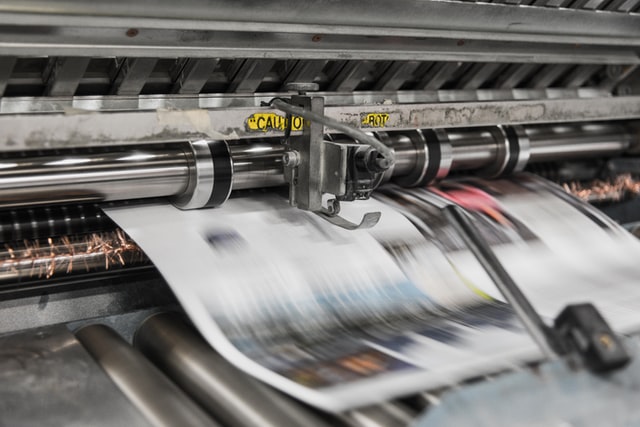Anilox rolls are an essential component in many modern flexographic printing systems because of their ability to deliver a precise amount of ink to printing plates. They are cylindrical in shape and often coated in ceramic with a core made of steel or aluminum. The surface of the anilox roll is covered in millions of tiny cells that determine the quantity of ink carried to the plates. If even a small part of the anilox roll becomes damaged due to neglect or misuse, the entire roll might need to be replaced, which can be very costly. Avoid harming your anilox rolls by handling your printing equipment cautiously and following the appropriate cleaning and maintenance guidelines.
Handle Equipment With Care
Anilox rolls, along with other printing equipment, should be handled carefully. Even tiny scratches or dents could cause severe issues for your print quality. The anilox roll should be stored with a protective cover when not in use. If you have to move it, be sure never to drag the anilox roll and always use both hands with lifting it. Consider getting a hoist or asking for assistance if you’re uncertain about your ability to lift the anilox roll alone. If you purchase a new anilox roll, take time to inspect it closely when it arrives. Don’t rush the process of unboxing and setting up your new equipment. In general, you should avoid moving the anilox roll more than necessary as it risks causing damage to the engraved cells.
Establish a Cleaning Routine
The anilox roll should be cleaned daily or after each job to prevent the build-up of dried ink. Once the job is done, the print operator can clean the anilox roll mechanically using a brush. Make sure to use the correct brush for your anilox roll. For example, a stainless steel brush is appropriate if you have a ceramic anilox roll, but brass brushes could damage your equipment. Anilox roll cleaner can also be used regularly. As with the brushes, take care to get the proper cleaning solution for your anilox rolls. Consider the pH and chemical content and how they might affect the materials that make up your equipment. It is also essential that any operators who use these cleaning products be knowledgeable about chemical safety and have access to the appropriate personal protective gear when cleaning the anilox rolls.
Although they can be fragile and expensive, you can get the most out of your anilox rolls with the right care and appropriate handling.
Anilox rolls are an essential component in many modern flexographic printing systems because of their ability to deliver a precise amount of ink to printing plates. They are cylindrical in shape and often coated in ceramic with a core made of steel or aluminum. The surface of the anilox roll is covered in millions of tiny cells that determine the quantity of ink carried to the plates. If even a small part of the anilox roll becomes damaged due to neglect or misuse, the entire roll might need to be replaced, which can be very costly. Avoid harming your anilox rolls by handling your printing equipment cautiously and following the appropriate cleaning and maintenance guidelines.
Handle Equipment With Care
Anilox rolls, along with other printing equipment, should be handled carefully. Even tiny scratches or dents could cause severe issues for your print quality. The anilox roll should be stored with a protective cover when not in use. If you have to move it, be sure never to drag the anilox roll and always use both hands with lifting it. Consider getting a hoist or asking for assistance if you’re uncertain about your ability to lift the anilox roll alone. If you purchase a new anilox roll, take time to inspect it closely when it arrives. Don’t rush the process of unboxing and setting up your new equipment. In general, you should avoid moving the anilox roll more than necessary as it risks causing damage to the engraved cells.
Establish a Cleaning Routine
The anilox roll should be cleaned daily or after each job to prevent the build-up of dried ink. Once the job is done, the print operator can clean the anilox roll mechanically using a brush. Make sure to use the correct brush for your anilox roll. For example, a stainless steel brush is appropriate if you have a ceramic anilox roll, but brass brushes could damage your equipment. Anilox roll cleaner can also be used regularly. As with the brushes, take care to get the proper cleaning solution for your anilox rolls. Consider the pH and chemical content and how they might affect the materials that make up your equipment. It is also essential that any operators who use these cleaning products be knowledgeable about chemical safety and have access to the appropriate personal protective gear when cleaning the anilox rolls.
Although they can be fragile and expensive, you can get the most out of your anilox rolls with the right care and appropriate handling.




